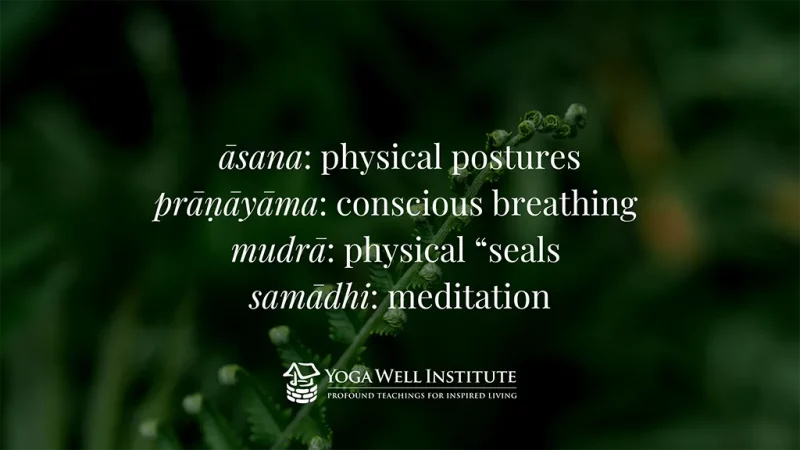The Haṭha Yoga Pradīpika provides an excellent overview of the practice of haṭha yoga.
This 15th Century Sanskrit text describes many of the principles and techniques that form the foundation of the practice of Yoga in modern times. Divided into four chapters, it suggests that the practice of Yoga start with physical postures (āsana) then move to conscious breathing (prāṇāyāma), physical “seals (mudrā), and finally meditation (samādhi).

Each chapter discusses the what and why of these practices, as well as many important auxiliarily elements like: diet and lifestyle, the proper environment for practice, and the cleansing techniques known as kriyas.
Over the course of the text, a nuanced presentation of the practice of Yoga emerges.
One in which the meditation state of samādhi is attained through the physiological manipulation of body and breath, rather than the directing of the mind. In Patañjali’s Yogasūtra the means to attain a state of Yoga stem from influencing the quality and content of the mind. The Haṭha Yoga Pradīpika describes how to attain this state by influencing the flow of prāṇa through prāṇāyāma and mudrā, while simultaneously increasing the body’s agni (‘fire’).
haṭha yoga is not in opposition to raja yoga.
In fact, the text explicitly describes them as excellent stepping stone preparations for the psychological work of raja yoga (i.e. Patañjali’s Yogasūtras). For anyone who practices regularly, understanding the principles of āsana, prāṇāyāma, mudrā and meditation that are presented in this text will have a huge impact on their practice.
Study Haṭha Yoga Pradīpika
If you wish to study Haṭha Yoga Pradīpika in depth and experience authentic haṭha yoga, this is for you.

Chase Bossart
M.A., C-IAYT, E-RYT 500
Executive Director of the Yoga Well Institute, Chase has been studying Yoga, Sanskrit, eastern philosophy and religion for nearly 30 years. He had the opportunity to personally study with Mr. TKV Desikachar and serve as a teacher at the Krishnamacharya Yoga Mandiram.



